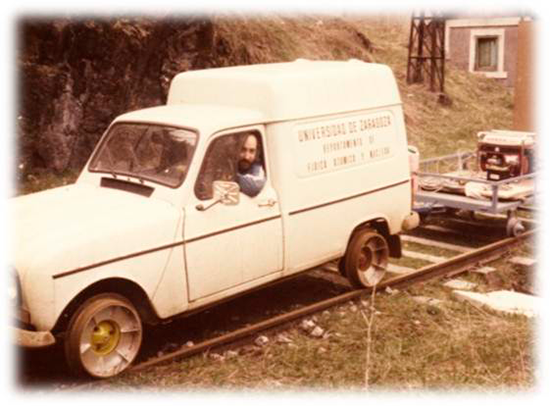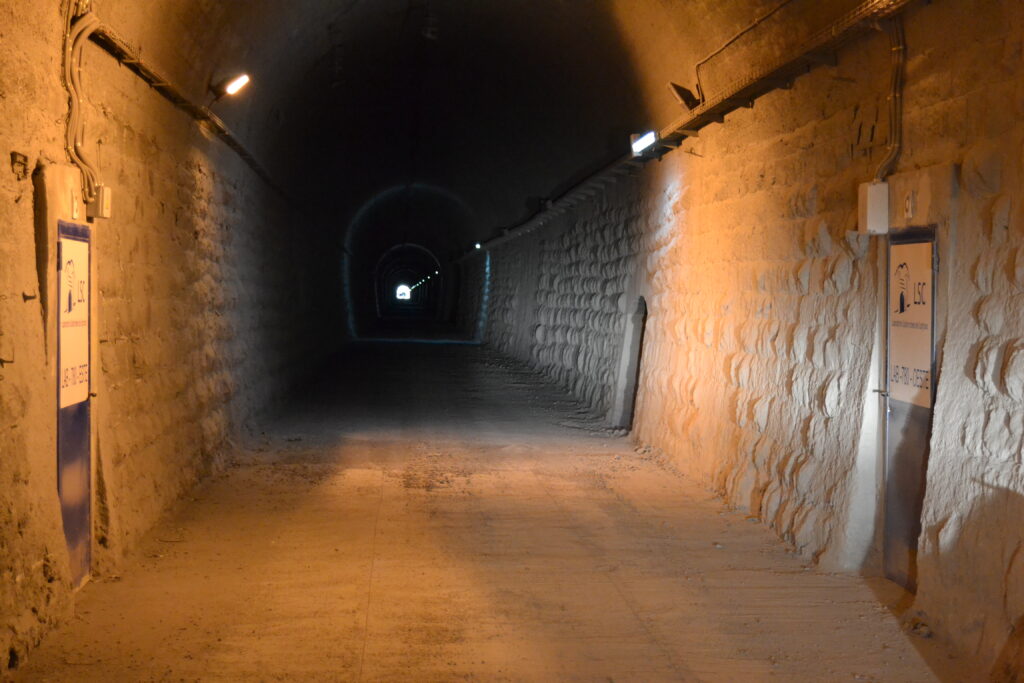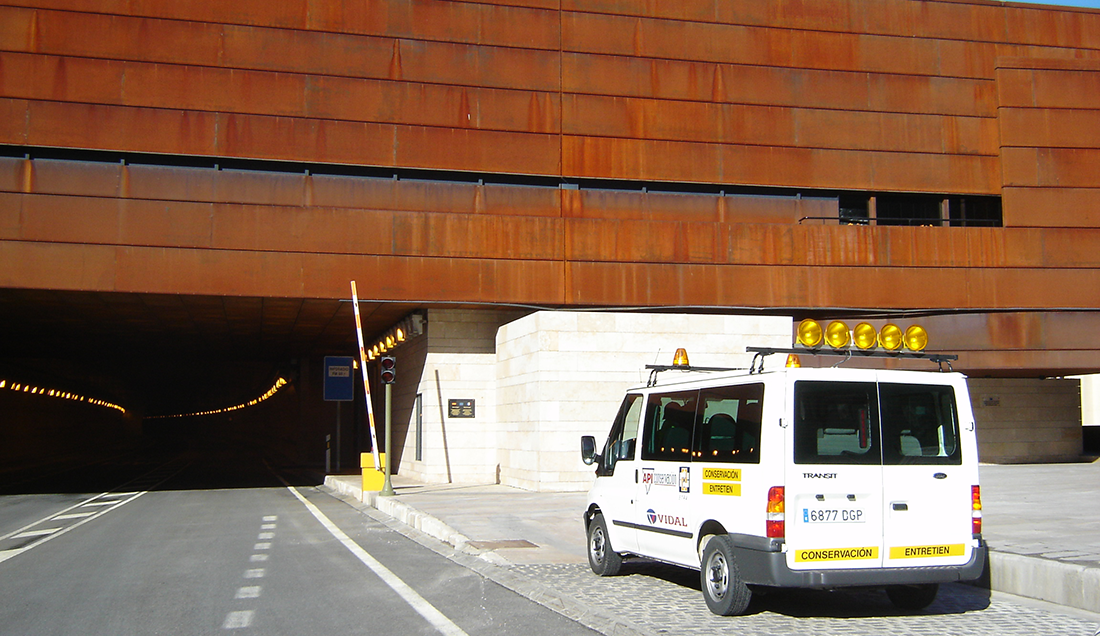HISTORY
In 1985 A. Morales and the Nuclear Physics and Astroparticle Physics Group of the University of Zaragoza started a project to exploit the underground space in the abandoned railway tunnel to house possible low background experiments, thus protecting them from cosmic radiation. Their first infrastructure consisted of a car, whose wheels had been modified so that it could be moved along the tracks, and a trailer containing the radiation detectors and the instrumentation needed to characterise the entire length of the tunnel.
The first laboratory was located in a pair of existing cavities on both sides of the railway tunnel 780 m from the Spanish entrance. Both locations have now been renovated and integrated into the new LSC and are referred to as Lab 780 L and Lab 780 R. Each of them consists of a small room (12 m2) leading through opposite staircases to two tunnels parallel to the main one, of about 70 m in total length.
In the early 1990s, the Spanish and French governments decided to dig a road tunnel parallel to the existing and abandoned railway tunnel. The latter thus became an evacuation route connecting the two tunnels by means of a series of galleries.
In 1994, taking advantage of these works, a new experimental hall, 118 m2, at 2520 m from the Spanish entrance was excavated. The hall hosted in the following years a number of experiments, on dark matter and neutrino physics. Along the years more than fifty scientists from twelve institutions from eight different countries have participated in the LSC Scientific Programme. This hall has also been integrated in the new LSC, after some refurbishment works. It is refered to as Lab 2500.
A. Morales’ action went further. On the strength of two decades of successful research and his great determination, he convinced the Spanish authorities to build a new, larger laboratory between the two tunnels in full compliance with international standards and with all the necessary underground facilities. It has a depth of 800 m under Mount Tobazo. This facility, now called Lab 2400, was completed in 2006. However, a year later, signs of rock instability began to appear and the laboratory was closed. The University of Zaragoza undertook a complete revision of the original project and the necessary rock support structures were installed to ensure the safety of both personnel and facilities.
In order to increase the level of safety, a specific fibre-optic structure continuously monitors the stability of the rock.
The new laboratory is managed by a Consortium between the Ministry of Science, and Innovation, the Aragon Government and the University of Zaragoza. The underground facilities were completed and handed over by the University of Zaragoza to the Consortium on 30 June 2010. The “old” underground infrastructures were integrated into the LSC following a Memorandum of Understanding with the University of Zaragoza (total area 1560 m², total volume 10.500 m³).
The underground experimental activities are supported by an external building located at Canfranc Estación with a mechanical workshop, specialised laboratories, offices for LSC staff and conference, exhibition and meeting rooms for users which is available since January 2011.






